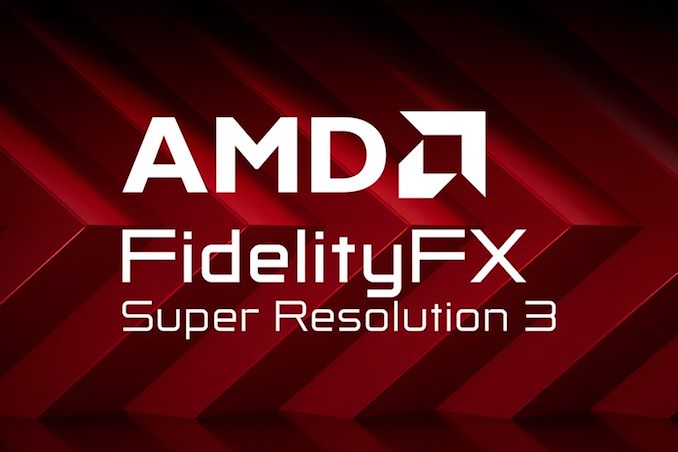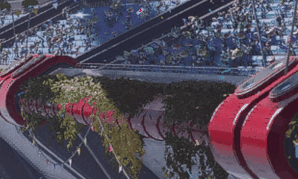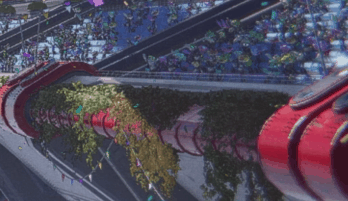AMD Announces FSR 3.1: Seriously Improved Upscaling Quality
by Anton Shilov on March 21, 2024 10:00 AM EST- Posted in
- GPUs
- AMD
- Radeon
- FSR
- FidelityFX

AMD's FidelityFX Super Resolution 3 technology package introduced a plethora of enhancements to the FSR technology on Radeon RX 6000 and 7000-series graphics cards last September. But perfection has no limits, so this week, the company is rolling out its FSR 3.1 technology, which improves upscaling quality, decouples frame generation from AMD's upscaling, and makes it easier for developers to work with FSR.
Arguably, AMD's FSR 3.1's primary enhancement is its improved temporal upscaling image quality: compared to FSR 2.2, the image flickers less at rest and no longer ghosts when in movement. This is a significant improvement, as flickering and ghosting artifacts are particularly annoying. Meanwhile, FSR 3.1 has to be implemented by the game developer itself, and the first title to support this new technology sometime later this year is Ratchet & Clank: Rift Apart.
| Temporal Stability | |
| AMD FSR 2.2 | AMD FSR 3.1 |
| Ghosting Reduction | |
| AMD FSR 2.2 | AMD FSR 3.1 |
Another significant development brought by FSR 3.1 is its decoupling from the Frame Generation feature introduced by FSR 3. This capability relies on a form of AMD's Fluid Motion Frames (AFMF) optical flow interpolation. It uses temporal game data like motion vectors to add an additional frame between existing ones. This ability can lead to a performance boost of up to two times in compatible games, but it was initially tied to FSR 3 upscaling, which is a limitation. Starting from FSR 3.1, it will work with other upscaling methods, though AMD refrains from saying which methods and on which hardware for now. Also, the company does not disclose when it is expected to be implemented by game developers.
In addition, AMD is bringing support for FSR3 to Vulkan and Xbox Game Development Kit, enabling game developers on these platforms to use it. It also adds FSR 3.1 to the FidelityFX API, which simplifies debugging and enables forward compatibility with updated versions of FSR.
Upon its release in September 2023, AMD FSR 3 was initially supported by two titles, Forspoken and Immortals of Aveum, with ten more games poised to join them back then. Fast forward to six months later, the lineup has expanded to an impressive roster of 40 games either currently supporting or set to incorporate FSR 3 shortly. As of March 2024, FSR is supported by games like Avatar: Frontiers of Pandora, Starfield, The Last of Us Part I. Shortly, Cyberpunk 2077, Dying Light 2 Stay Human, Frostpunk 2, and Ratchet & Clank: Rift Apart will support FSR shortly.
Source: AMD














21 Comments
View All Comments
meacupla - Thursday, March 21, 2024 - link
I wish AMD didn't use GIF, a format known for producing grainy results in the first place. They could have used AVIF, APNG, or a video.With that said, it does look like an improvement over FSR1 or XeSS.
FSR2 was hot garbage and I never understood why they released it as is.
Qasar - Thursday, March 21, 2024 - link
i solve that problem the best way, i dont use up scaling... dlss or fsr....GeoffreyA - Thursday, March 21, 2024 - link
A solution seemingly forgotten!meacupla - Thursday, March 21, 2024 - link
cool, not everyone runs a rtx 4090 or plays at 480pQasar - Thursday, March 21, 2024 - link
meacupla, too bad im not running a 4090, but nice try..im still on a 1060.......
meacupla - Friday, March 22, 2024 - link
yeah, let's see your 1060 run Alan Wake 2 at 1080p without FSRQasar - Friday, March 22, 2024 - link
sure.. IF i played the game, in just turn down the eye candy....besides upscaling is just a crutch, look at the whole rtx line that doesnt have 90 in it for example.
Alexvrb - Saturday, March 23, 2024 - link
If it looks and runs better with modern upscaling techniques, why not use them? Comparisons favor the newest DLSS and FSR implementations over native resolutions ESPECIALLY on slower hardware. Being stodgy and turning down the resolution and eye candy is hardly the "win" you seem to think.Qasar - Saturday, March 23, 2024 - link
it is the " win " when the card you have may not support it.. and you cant afford a new card.either way.. some like and use up scaling, some prefer native.. its really the users preference..
the fact that nvidia has stated that in order to get the performance we should be getting out of the card we buy ( less the xx90s) DLSS will be needed.. is also a bad idea, and shows nvidia cards, are only gonna get worse, as far as which tier they are called, and what the hardware is, again, look at the rtx 4000 series
Dante Verizon - Tuesday, March 26, 2024 - link
*TAA, not native res.